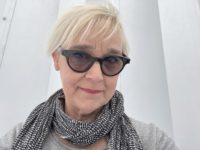After a year of reckoning, many of the nation’s largest architecture firms are reporting on the work they’re doing to foster diversity, equity, and inclusion (DEI). Efforts include improving job recruitment and mentorship, funding scholarships for Black talent and recognizing Juneteenth as an official holiday.
The conviction of former Minneapolis police officer Derek Chauvin on April 20 for the murder of George Floyd is an opportunity to reflect on changes made in the profession since last summer’s wake-up call. “The senseless death of George Floyd last year and the racial awakening that followed has served as a pivotal moment for how we address diversity and inclusion efforts across multiple industries,” says Jason Pugh, senior associate at Gensler and president of the National Organization of Minority Architects (NOMA). “It was amazing to see how it impacted everyone in the architecture and design community, which has notoriously carried the stigma of being a white, male-dominated profession.”
Increasing diversity in the workplace is now key for many firms, after first steps that encouraged colleagues to share personal stories of discrimination, and the introduction of bias training for staff. With the pandemic easing, and “as we move into a position of hiring, we want our hiring to look very different from how it’s looked in the past,” says Gensler’s co-CEO Diane Hoskins, who identifies as Black and runs the world’s largest architecture firm with co-CEO Andy Cohen. “It is a major priority for us. Last year we didn’t exactly know our demographics, but now we do. That’s the effort we undertook. It’s the starting point.” Colin Koop, partner at SOM New York, notes, “We’re being more transparent with everyone at SOM about our demographics and how we can do better as a global practice.”
“A lot of firms have lowered their guard when it comes to sharing their diversity metrics,” says Pugh. “We all know the numbers are low for minority representation across the design industry, but it’s refreshing to see firms own these numbers and share their plans to fix it.” Perkins&Will, for example, announced it had hired 19 female employees this year, six of whom are Black/indigenous/people of color (BIPOC), six Asian, two Hispanic, and one mixed race.
For those in NOMA’s President’s Circle, the corporate membership provides architecture offices with training in how to have the “very hard conversations,” adds Pugh. “We’ve seen more sincerity and intentionality since last summer, with firms, allied organizations, and companies who want to partner with NOMA and move the needle beyond simply checking a box. Our partners are establishing more follow-ups, action plans, and next steps towards shared target goals.”
Several large firms have hired diversity managers, including a global director of DEI at Gensler and a corporate-diversity and social-responsibility manager at Kohn Pedersen Fox (KPF). At SOM, “we know there is a lot more work to do, but we’re steadily making progress,” says chief people officer Doryse Franco.
According to Pugh, the profession was slow to adopt best practices in the past. “Only a small handful of medium and large firms have dedicated staff solely focused on these roles, which have existed for some time across other industries,” he says. “But over the last year, we’ve seen a large increase in these DEI positions, which has been awesome and encouraging.”
Hiring more people of color, mentoring staff, and supporting scholarships for Black architecture students are among the strategies that firms big and small are undertaking. “These are first steps in a larger endeavor,” says Molly McGowan, partner at Ennead, which has a new planning group that meets biweekly with a DEI consultant; “Meaningful change takes time and effort every day.” Safdie Architects also created a DEI committee. Led by the office’s younger employees, its mission is articulating tangible ideas for surmounting major barriers to inclusion.
It is far too early to tell the long-term effects of these developing DEI strategies. Even the profession’s leaders acknowledge that the foundation for change, in architecture and beyond, is still being built. “We know that mentoring goes both ways,” says KPF president James von Klemperer. “We have a lot to learn from the experts and scholars who have spent their lives studying racial discrimination and the systems that have led to the unacceptable lack of equity in our society today.”







